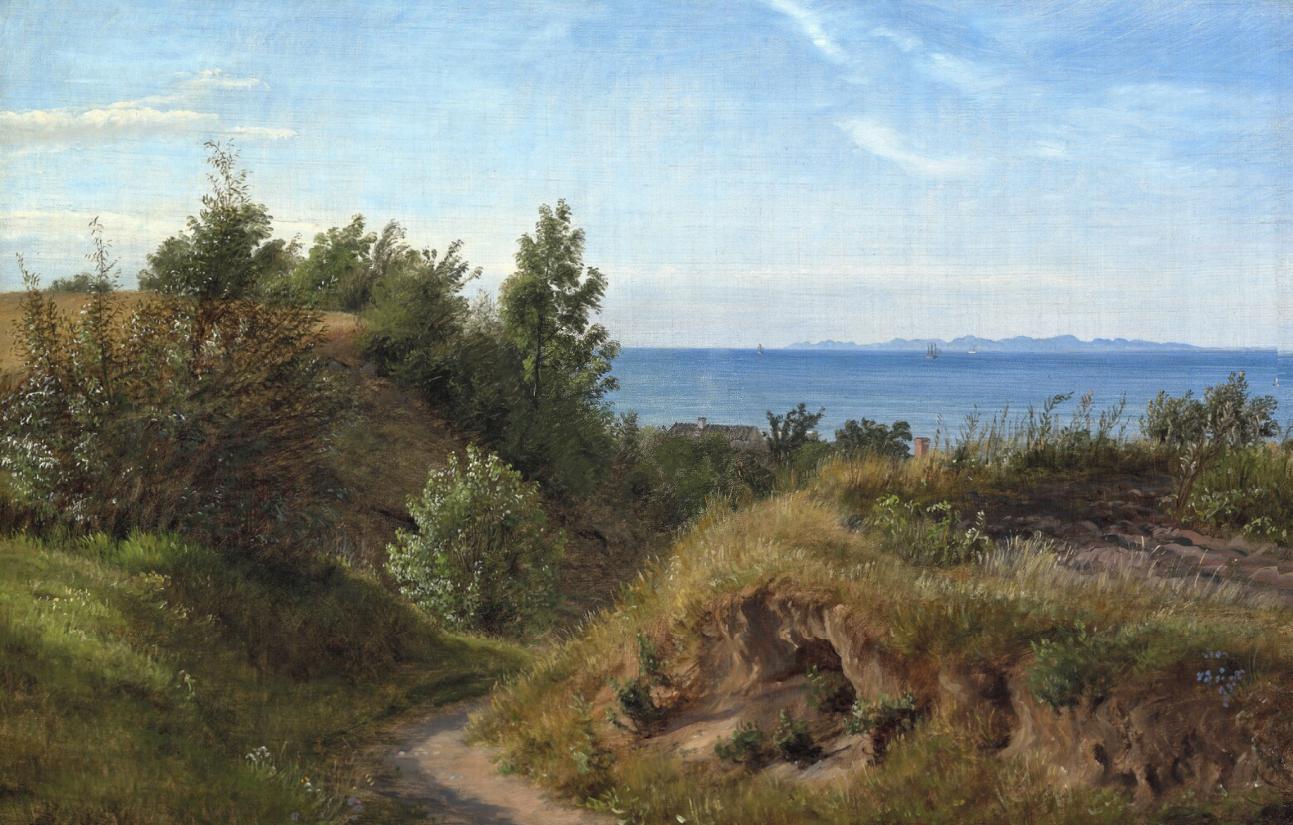Sommerdag ved en dansk kyst (Summer’s Day at a Danish Coast) is the name of the small painting, which P. C. Skovgaard painted in 1850. More specifically, the scene is from Nygaard in northern Zealand, not far from Vejby, the town where Skovgaard grew up and a place he frequently revisited later in life.
The Danish coastline
Today, Skovgaard is widely regarded as the quintessential proponent of Danish Golden Age painting. His landscapes highlight Denmark’s national characteristics: beech woodlands, forest lakes, the coastline. As in his principal piece, Udsigt over havet fra Møens Klint (View of the Sea from Møn’s Cliff), from the same year, which is also in the collection of the Skovgaard Museet, the Nygaard scene is portrayed as a sort of arrival to a Danish coast. Both paintings appear to capture the moment when the sea view suddenly appears before the rambler.
In the piece from Møns Klint, the view is framed by the beech wood, and the striking lime peak Sommerspiret (Summer Spire) at the Cliff that is revealed in sparkling white majesty at the edge of the wood, epitomizing national romanticism’s bombastic celebrations of the Danish landscape. Sommerdag ved en dansk kyst is not nearly as dramatic. There are no famous landmarks to indicate the specific geographic location. At first glance, it could be almost any spot on the Danish coastline, as the title suggests. And yet, on the horizon we can faintly make out the outline of Sweden, its rugged silhouette in stark contrast to the softer, gentler scenery in the foreground.
The grandeur of the little things
These contrasts seem to be a core aspect of Skovgaard’s art. In Sommerdag ved en dansk kyst the artist pays homage to the human scale of Danish nature, the ordinary Danish landscape. Certainly, the image – like the piece from Møns Klint – is the result of careful composition with depth and a movement that, here, follows the winding path down to beach. Yet, above all, Skovgaard manages to make the scene appear realistic and natural, not least by allowing the commonplace features to steal the scene: his focus is on the leaves on the bushes and short trees, the formations in the sand and the grasses, which he depicts in painstaking detail. The two houses that the path leads down to are only suggested, with chimneys and a roof ridge. Instead, the humble natural phenomena, all the little things that characterize the Danish landscape, are given prominence and allowed to dominate.
Rarely seen
Although it has been around for 170 years, Sommerdag ved en dansk kyst is a fairly unknown piece in Skovgaard’s production. Its provenance is not yet fully uncovered, and it has not previously featured in any of the big retrospective exhibitions about Skovgaard. The Skovgaard Museum purchased the painting at auction and plans to present it to the public later this spring.
About P. C. Skovgaard
Peter Christian Skovgaard (1817–75) is a principal figure in Danish Golden Age art. He trained at the Royal Danish Academy of Fine Arts, where he was one of C. W. Eckersberg’s students. At the Academy he studied classic European landscape art in the collections in Copenhagen but went on to create paintings that were based on his own in-depth studies in nature. After 1850 he developed a monumental and personal style that had a significant impact on the work of subsequent generations.



